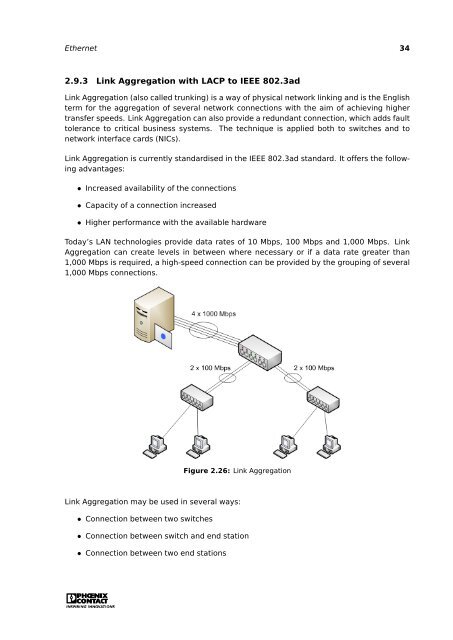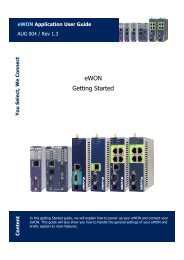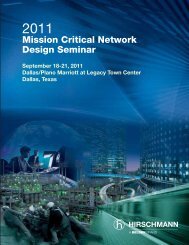Click to download Ethernet Basics manual - Grant Industrial Controls
Click to download Ethernet Basics manual - Grant Industrial Controls
Click to download Ethernet Basics manual - Grant Industrial Controls
Create successful ePaper yourself
Turn your PDF publications into a flip-book with our unique Google optimized e-Paper software.
<strong>Ethernet</strong> 34<br />
2.9.3 Link Aggregation with LACP <strong>to</strong> IEEE 802.3ad<br />
Link Aggregation (also called trunking) is a way of physical network linking and is the English<br />
term for the aggregation of several network connections with the aim of achieving higher<br />
transfer speeds. Link Aggregation can also provide a redundant connection, which adds fault<br />
<strong>to</strong>lerance <strong>to</strong> critical business systems. The technique is applied both <strong>to</strong> switches and <strong>to</strong><br />
network interface cards (NICs).<br />
Link Aggregation is currently standardised in the IEEE 802.3ad standard. It offers the following<br />
advantages:<br />
• Increased availability of the connections<br />
• Capacity of a connection increased<br />
• Higher performance with the available hardware<br />
Today’s LAN technologies provide data rates of 10 Mbps, 100 Mbps and 1,000 Mbps. Link<br />
Aggregation can create levels in between where necessary or if a data rate greater than<br />
1,000 Mbps is required, a high-speed connection can be provided by the grouping of several<br />
1,000 Mbps connections.<br />
Figure 2.26: Link Aggregation<br />
Link Aggregation may be used in several ways:<br />
• Connection between two switches<br />
• Connection between switch and end station<br />
• Connection between two end stations




